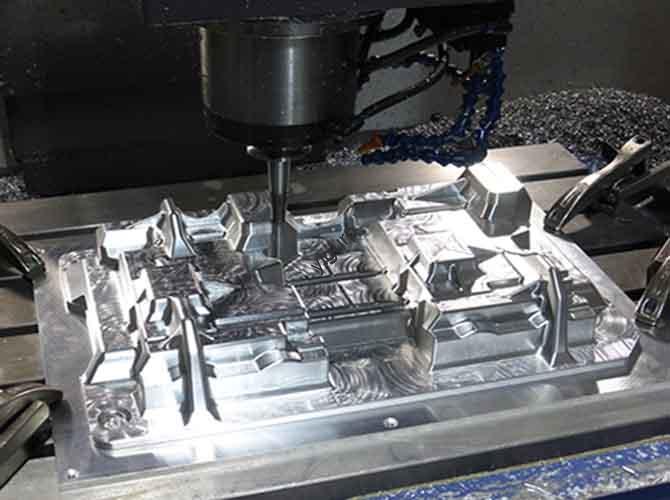Every CNC machinist has faced this problem: parts deform after machining, tools wear out too fast, or the final product can’t stand up to harsh use. A solução? Heat treatment materials. By optimizing material properties before or after Usinagem CNC, you can fix these pain points and take your production to the next level. Let’s explore how.
1. Why Heat Treatment Materials Matter for CNC Machining
Heat treatment isn’t just an extra step—it’s the foundation of high-quality CNC parts. Here’s how it solves 4 common manufacturing problems:
| Problem Solved | How Heat Treatment Helps | Exemplo do mundo real |
|---|---|---|
| Poor Wear Resistance | Processos comoTireização boost material hardness by 30–50%, making parts last longer. | A CNC-machined steel gear treated with quenching lasts 2x longer than an untreated one. |
| Part Deformation/Cracking | Recozimento eliminates residual stresses from machining, mantendo as peças dimensionalmente estáveis. | A large aluminum plate for aerospace use: without annealing, it warped 0.5mm; with annealing, warpage dropped to 0.1mm. |
| Difficult Cutting Performance | Normalização softens tough materials (Por exemplo, Aço de alto carbono), reducing tool force by 20%. | Machining an untreated 4140 steel bar takes 10 minutos; a normalized one takes 7 minutos. |
| Weak Corrosion Resistance | Nitretagem adds a protective layer to materials, making them resistant to chemicals or saltwater. | A CNC-machined marine bolt treated with nitriding didn’t rust after 6 meses em água do mar (untreated bolts rusted in 1 mês). |
2. Common Heat Treatment Methods for CNC Machining Materials
Not all heat treatments are the same—you need to pick the right one for your material and part. Abaixo estão o 3 main categories, with their key details:
2.1 Overall Heat Treatment (For Whole-Part Properties)
These methods treat the entire material, ideal for parts that need uniform strength or flexibility.
| Método | Process Steps | Melhor para materiais | Benefit for CNC Machining |
|---|---|---|---|
| Recozimento | Heat to 800–950°C → Hold 1–3 hours → Cool slowly (air or furnace). | Alumínio, Aço de baixo carbono | Improves cutting speed by 15–20%. |
| Normalização | Heat to 850–1000°C → Hold 1 hour → Cool faster than annealing (still air). | Medium-carbon steel, ferro fundido | Creates finer material structure for smoother CNC cuts. |
| Tireização + Temering | 1. Querece: Heat to 800–900°C → Cool rapidly (água/óleo). 2. Temperamento: Reheat to 200–600°C → Cool. | Aço de alto carbono, liga de aço | Equilibra dureza (from quenching) e resistência (de temering) for durable parts. |
2.2 Surface Heat Treatment (For Outer-Layer Strength)
Use these when you need a hard surface but a flexible core (Por exemplo, engrenagens, eixos).
- Induction Heating Quenching: Uses electromagnetic induction to heat the surface (2–5mm deep) in 10–30 seconds, então apaga. Perfect for high-volume CNC parts (Por exemplo, Eixos automotivos) because it’s fast and automated.
- Laser Heating Quenching: A high-energy laser scans the surface, heating it to 900–1200°C in milliseconds. Great for precision parts (Por exemplo, instrumentos médicos) since it causes almost no deformation.
2.3 Chemical Heat Treatment (For Protective Layers)
These methods add elements (carbono, azoto) to the material’s surface for extra protection.
- Carburismo: Heat the part in a carbon-rich medium (850–950 ° C.) for 2–8 hours. Carbon penetrates 0.5–2mm deep, making the surface hard (HRC 58–62) while keeping the core soft. Ideal for CNC-machined gears or camshafts.
- Nitretagem: Heat in a nitrogen medium (500–550 ° C.) for 10–40 hours. Forma um fino (0.1–0.5mm) hard layer that resists corrosion. Perfect for parts used in chemical plants or marine equipment.
3. How to Choose the Right Heat Treatment for Your CNC Project
You might ask: “With so many options, how do I pick?” Follow this 3-step process:
- Define Your Part’s Goal: Do you need wear resistance (Por exemplo, ferramentas)? Resistência à corrosão (Por exemplo, peças marinhas)? Or easy machining (Por exemplo, protótipos)?
- Match the Material: Aluminum works best with annealing; high-carbon steel needs quenching + temering; stainless steel benefits from nitriding.
- Consider Production Speed: For fast turnaround (Por exemplo, 1-week prototypes), use induction quenching. For long-lasting parts (Por exemplo, máquinas industriais), choose carburizing or nitriding.
Exemplo: If you’re CNC-machining a stainless steel valve for a chemical tank (goal: Resistência à corrosão, material: aço inoxidável, production time: 2 semanas), nitretagem is the right choice.
4. Perspectiva da tecnologia YIGU
Na tecnologia Yigu, we’ve helped hundreds of clients optimize CNC production with heat treatment materials. O maior erro que vemos? Skipping heat treatment to save time—only to waste more time fixing deformed parts or replacing tools. We recommend integrating heat treatment early: por exemplo, annealing aluminum before CNC machining cuts tool costs by 25%, and nitriding steel after machining boosts part lifespan by 3x. It’s not just a step—it’s an investment in consistent, Resultados de alta qualidade.
Perguntas frequentes
- Should I heat treat the material before or after CNC machining?Depende: Annealing/normalizing (to improve cutting) Funciona melhor antes usinagem. Quenching/nitriding (to boost hardness/corrosion resistance) is done depois usinagem (to avoid damaging the treated surface).
- Does heat treatment add extra cost to CNC projects?Short-term: Sim (Por exemplo, annealing adds $5–$15 per part). Long-term: No—heat treatment reduces tool replacement costs by 30% and cuts rework (from deformation) por 40%, saving money overall.
- Can all CNC machining materials be heat treated?A maioria pode: Aço, alumínio, and titanium respond well. Exceptions include some plastics (Por exemplo, PLA) and soft metals (Por exemplo, cobre puro)—heat treatment won’t improve their properties significantly.
